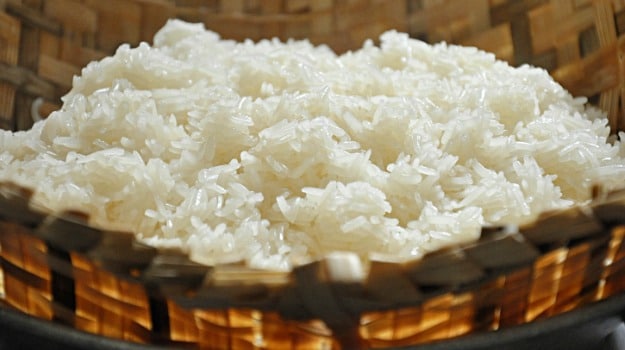This means a high risk for the planet as rice cultivation expands to feed a growing population, said the paper, published in the journal Nature. "There is an urgent need to establish sustainable technologies for increasing rice production while reducing methane fluxes from rice paddies," wrote the team led by Chuanxin Sun of the Swedish University of Agricultural Sciences.
(White Rice, Brown Rice Or Red Rice: Which One is the Healthiest?)
Already in 2002, scientists reported that the more grain carried by rice plants, the less methane they emitted. The leaves and stems of rice plants take up CO2, which is transformed through photosynthesis into sugars that are used to produce starch in the shoots, roots and grains. Carbon released from dead plants, or directly into the soil via the roots, is transformed by microorganisms into methane, which can escape into the atmosphere.(Now, Puffed Rice That's High on Protein)
Larger, starchier rice grains mean there is less carbon transferred to the soil to be turned into methane. But attempts to reduce emissions from paddies have focused on changes in farming practices, which can be onerous and expensive. Tackling the problem differently, a team from China, the United States and Sweden added a barley gene to a conventional rice cultivar to create a variety dubbed SUSIBA2.(Rice that Binds)
"Three-year field trials in China demonstrated that the cultivation of SUSIBA2 rice was associated with a significant reduction in methane emissions," said the study. "SUSIBA2 rice offers a sustainable means of providing increased starch content for food production while reducing greenhouse gas emissions from rice cultivation."
In a comment also carried by Nature, Paul Bodelier of the Netherlands Institute of Ecology described the research as "groundbreaking", but cautioned it also raised several "biological and ethics concerns".









